If you’ve ever wondered what is a full canvas suit and why it’s often praised by seasoned tailors and style connoisseurs alike, you’re in the right place. With years behind the shears, I can tell you, what lies inside these jacket makes all the difference. In this guide, I’ll walk you through exactly what a full canvas suit is, how it compares to half-canvas and fused options, and why it remains a hallmark of premium tailoring.
1. What is a full canvas suit?
A full canvas suit is a high-quality suit jacket that uses a traditional tailoring technique where a layer of canvas is sewn in between the outer fabric and the inner lining of the jacket. This canvas layer extends fully from the shoulders down through the chest and all the way to the bottom of the jacket, usually made from a blend of horsehair, wool or sometimes camel hair. It acts like the skeleton of the suit, helping it maintain its shape, breathe naturally and mold to the wearer’s body over time.
Unlike cheaper option often comes with the interlining is glued in place (which can lead to bubbling and stiffness), a full canvas suit is built to move with you and improve in fit as it’s worn. From a tailor’s point of view, it’s the gold standard. If you’re looking for a suit that ages gracefully and truly feels like it’s a part of your body, a full canvas suit is the way to go.
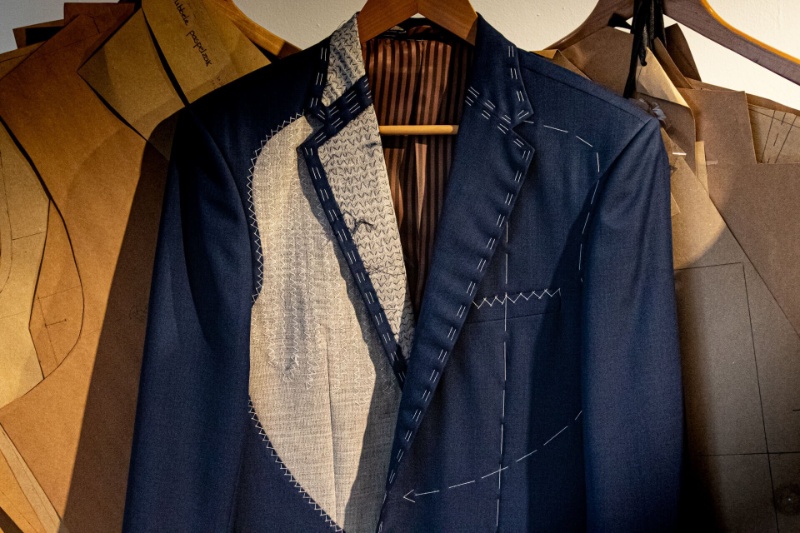
2. Benefits of a full canvas suit
Long lasting and unmatched elegance
One of the finest qualities of a full canvas suit is how beautifully it evolves with the wearer. Because the canvas layer is hand-stitched and not glued, it allows the jacket to naturally conform to your body shape over time. With each wear, the suit drapes more comfortably, almost like a second skin, something that simply isn’t possible with fused construction.
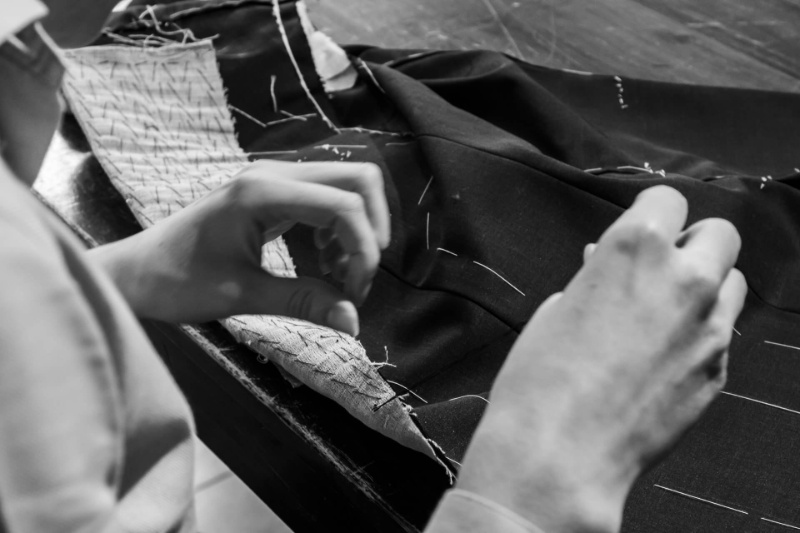
Durability
Because the canvas is stitched, not glued, it holds up far better over the years. There’s no risk of bubbling or delamination, even with regular dry cleaning or extended wear. The supportive framework helping the suit maintain its shape and structure for many years. This means less sagging at the chest, less puckering at the lapels, and far fewer trips to the tailor for readjustments.
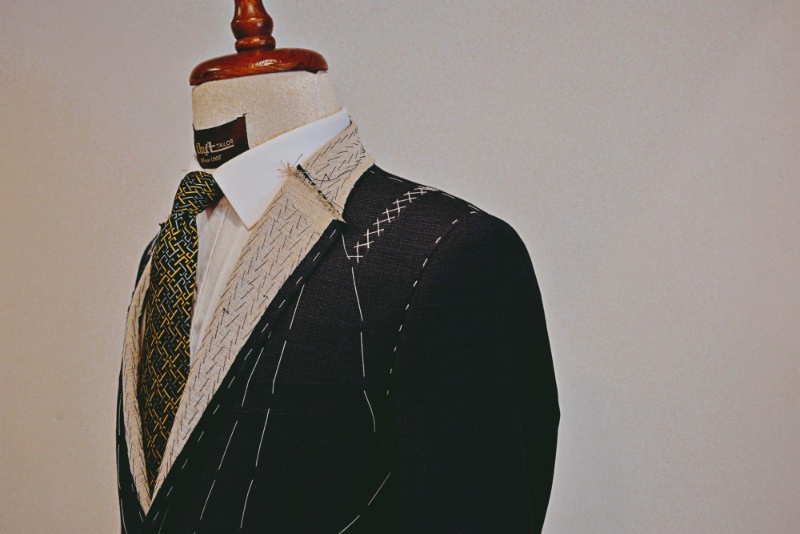
Great breathability
The canvas often made from natural fibers like horsehair and wool, allows air to flow more freely through the jacket, making it noticeably more comfortable. This feature keep you cooler, especially in warmer weather or long days at formal events.
The matter of feel
A full canvas suit simply wears better. It moves with you, not against you, and it gives the jacket a natural elegance and refined silhouette that glued suits can’t quite replicate. It’s not just about looking sharp but about feeling confident, comfortable, and at ease in every stitch.

3. Full canvas vs Half canvas vs Fused: Which one to choose?
Like how we always said that, what truly matters is the inside, the construction of a suit jacket is what truly defines its quality, comfort and longevity. There are three main types of suit construction you’ll come across: full canvas, half canvas, and fused. Each has its own characteristics, advantages, and trade-offs.
Full canvas suit – The most expensive
Like what we’ve discuss above, a full canvas suit uses a layer of horsehair or wool-based canvas that runs from the shoulders all the way down the front of the jacket. This is a time-consuming and labor-intensive method, but results in a jacket that breathes well, molds to the body over time and holds its shape beautifully.
Price range: $800 – $2500+
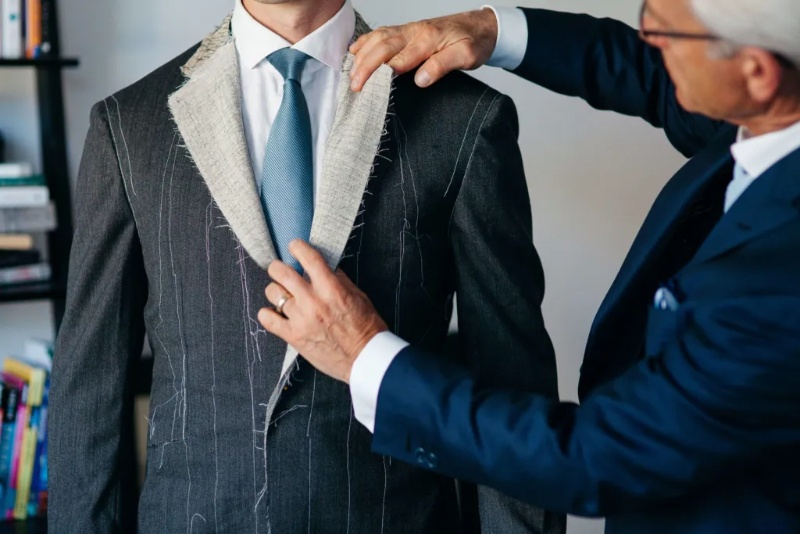
Half canvas suit – The middle ground
The canvas layer typically covers the chest and lapels, but stops around the midsection. This strikes a balance between structure and affordability. It still allows for a natural drape in the upper body, while reducing production costs and weight. The lower part of the jacket is fused, which can slightly limit breathability and long-term form, but for everyday office wear or semi-formal events, a well-made half canvas suit is an excellent choice.
Price range: $400 – $1000
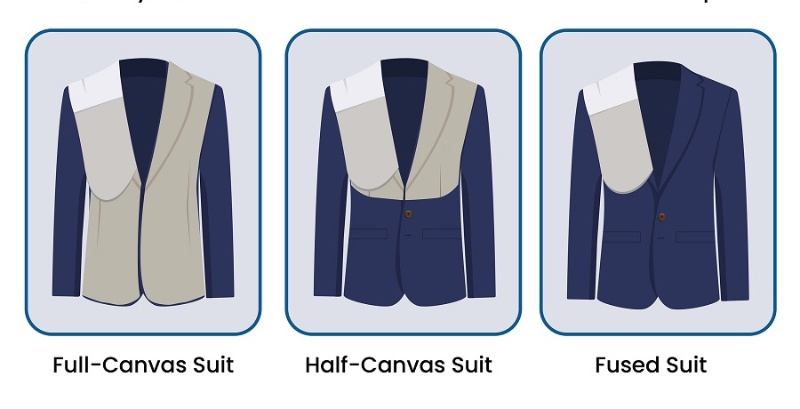
Fused suit – The most budget-friendly
Instead of stitching a canvas layer, the interlining is glued to the outer fabric, speeding up production and lowering cost. It’s the most economical option and often found in mass-produced suits. While it may look sharp at first, a fused suit doesn’t age as gracefully as other options. Over time, the glue can weaken, causing the whole structure to feel stiffer, breathe less, and is prone to issues like bubbling over time—especially after dry cleaning.
Price range: $100 – $500
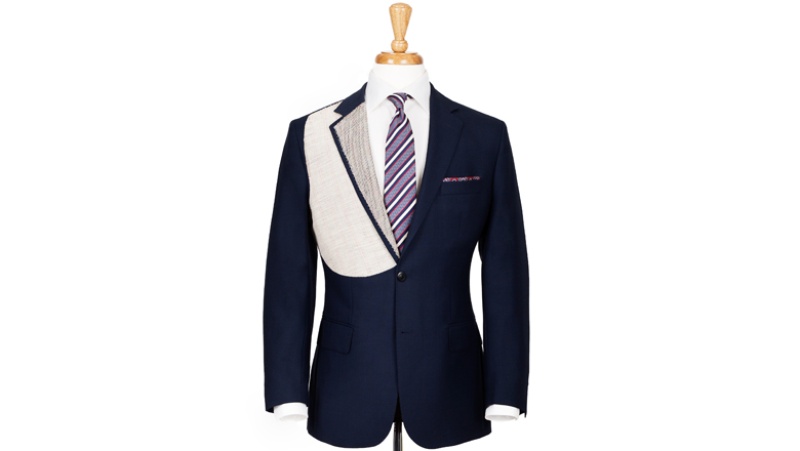
4. How to tell if a suit is full canvas
If you’re investing in a suit and want to make sure you’re getting the real deal, it’s important to know how to tell whether the jacket is truly full canvas. While this layer is hidden between the outer fabric and the lining, there are a few reliable methods to help you identify it.
Pinch test
Gently pinch the fabric of the jacket at the chest (usually just below the lapel) and try to separate the outer cloth from the inner lining. If you feel a third, floating layer that moves slightly between your fingers, that’s the canvas. In a full canvas suit, this layer continues down the entire front of the jacket, whereas in a half canvas, you’ll stop feeling it around the midsection.
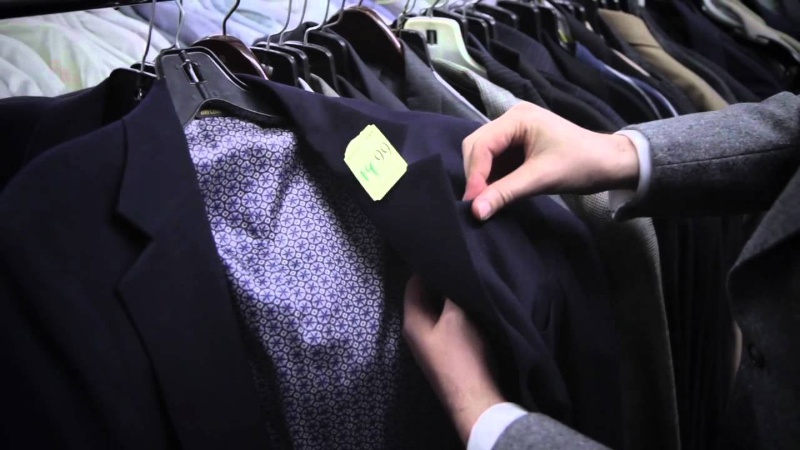
Subtle indicators
Handmade full canvas suits often have subtle indicators of fine tailoring, such as soft, naturally rolling lapels (not flat or stiff), a light but structured feel when worn, and a sense of movement that flows with the body, not against it. You might also notice pick stitching along the lapel edges or inside the jacket. They are small, neat stitches done by hand that signal careful construction.
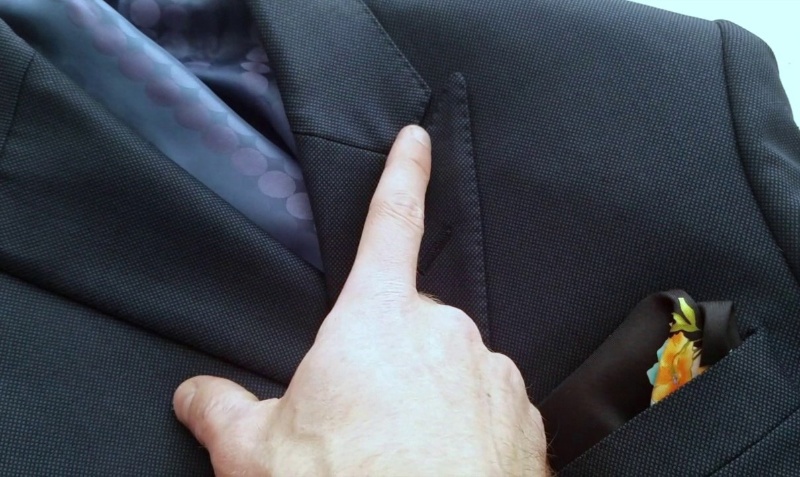
Simply be socialize
When buying a ready-to-wear or made-to-measure suit, don’t hesitate to ask the salesperson or tailor directly:
- Is this a full canvas construction, half canvas, or fused?
- What material is used for the canvas—horsehair, wool blend, or synthetic?
- Is the canvas hand-stitched or machine-attached?
A reputable tailor or brand will have no problem explaining their construction methods and materials. After all, full canvas is a mark of quality, and any craftsman worth their shears will be proud to stand behind it.
5. Is a full canvas suit worth the investment?
For anyone serious about dressing well, a full canvas suit isn’t just a luxury, it’s a smart and long-term investment. While the upfront cost is undeniably higher than that of a fused or half canvas suit, the value lies in how it performs over time.
Unlike cheaper alternatives that may lose their shape, feel stiff, or degrade after a few seasons, a full canvas suit can last a decade or more when properly cared for. And because the canvas molds to your body with wear, the fit and comfort actually improve over time, something you simply don’t get with glued construction.
So, who should consider investing in a full canvas suit? In my experience, it’s ideal for professionals who wear suits regularly, grooms looking for something special on their wedding day, or anyone ready to build a timeless wardrobe foundation. If you’re entering a new chapter in life: starting a career, attending formal events more often, or simply elevating your style, a full canvas suit offers a level of polish, durability, and confidence that’s hard to match.

In the world of tailored menswear, understanding what is a full canvas suit helps you appreciate the craftsmanship, structure, and longevity that set a truly exceptional suit apart. While it may come at a higher price point, the way a full canvas suit molds to your body over time, breathes naturally, and holds its shape makes it a worthy investment for any gentleman serious about style. Whether you’re stepping into the boardroom or attending a formal event, the confidence that comes from wearing a well-constructed suit is unmistakable.
Image cre: Internet
